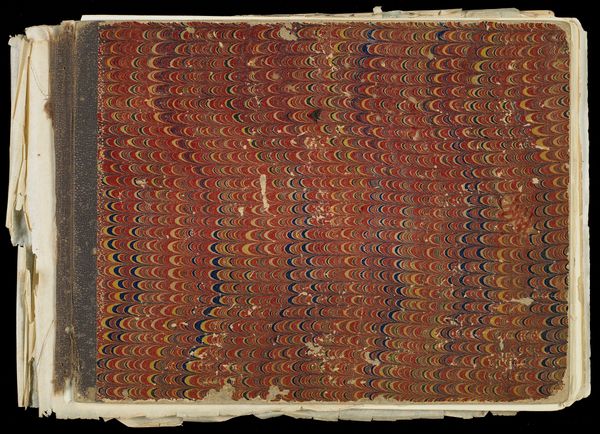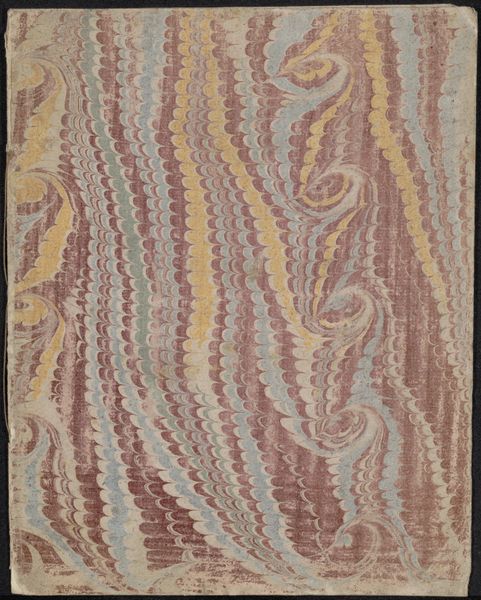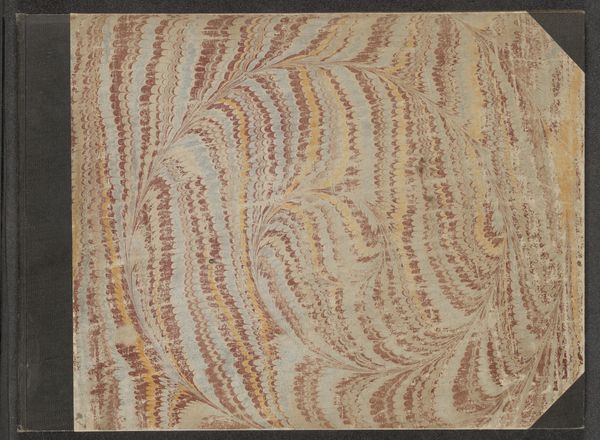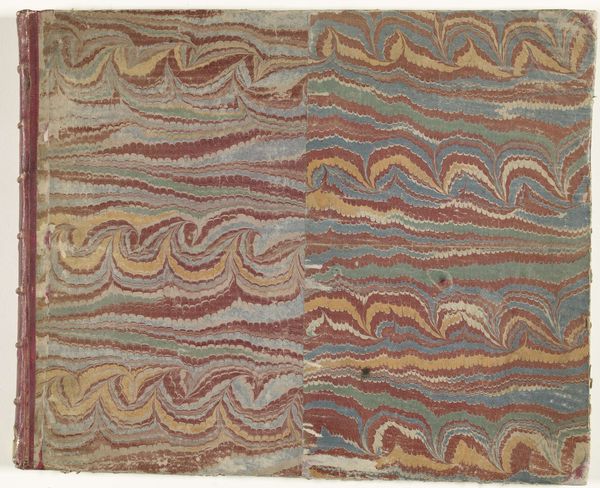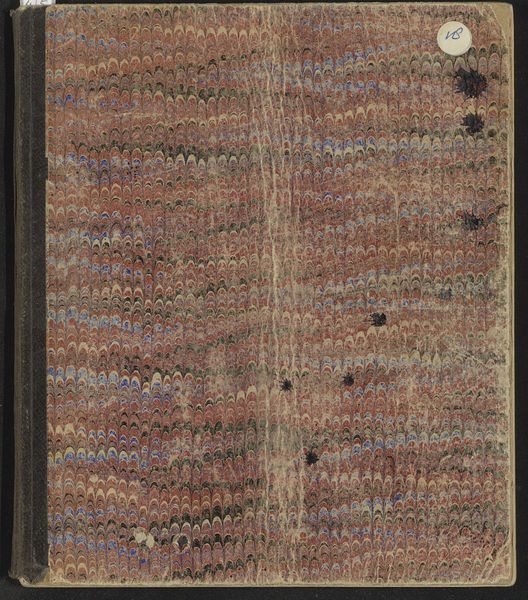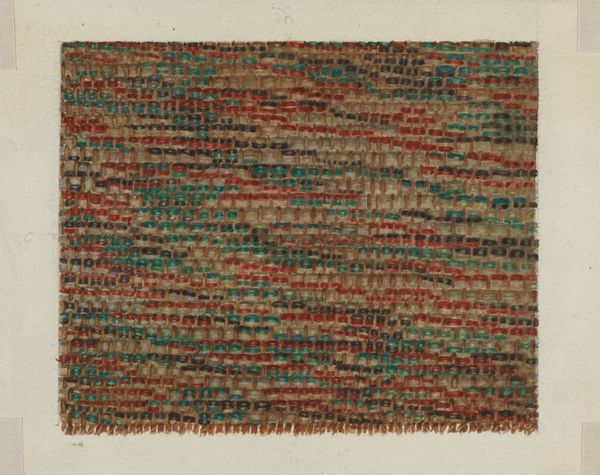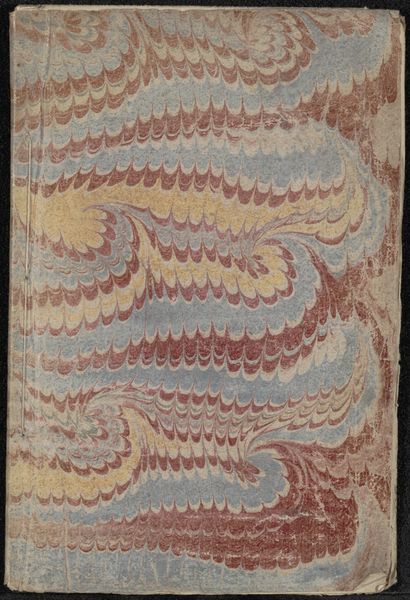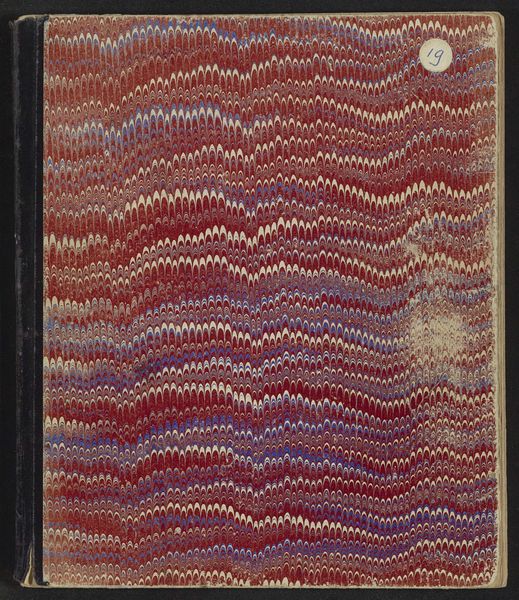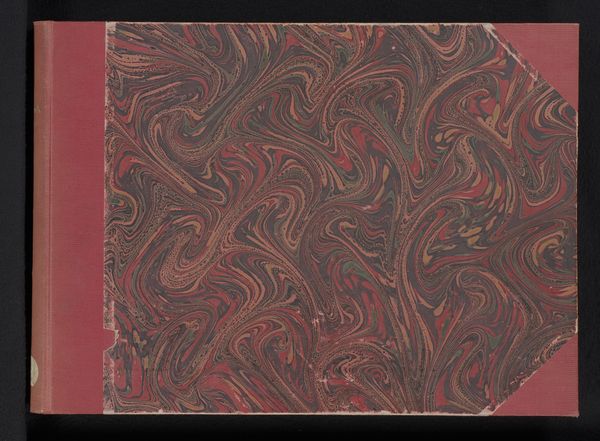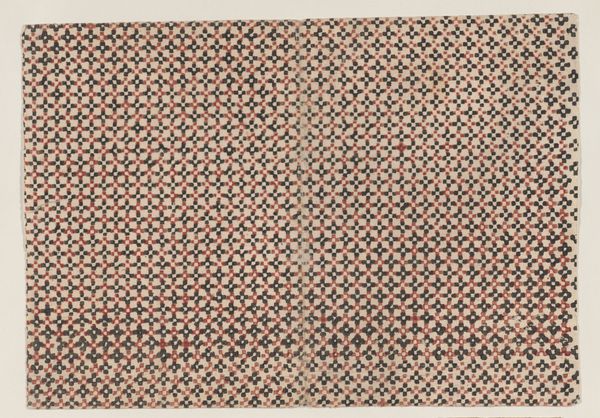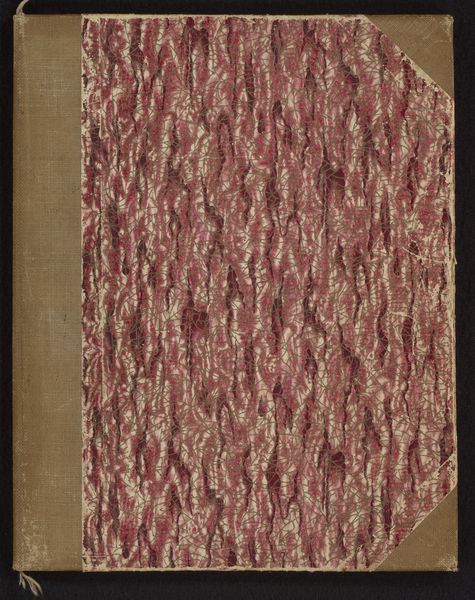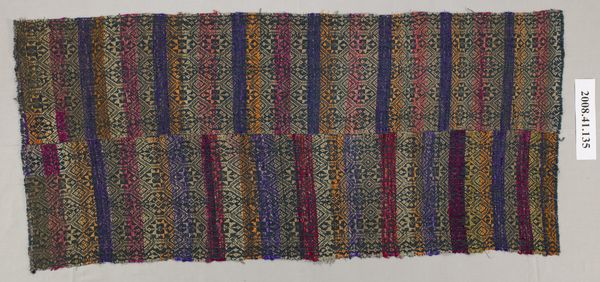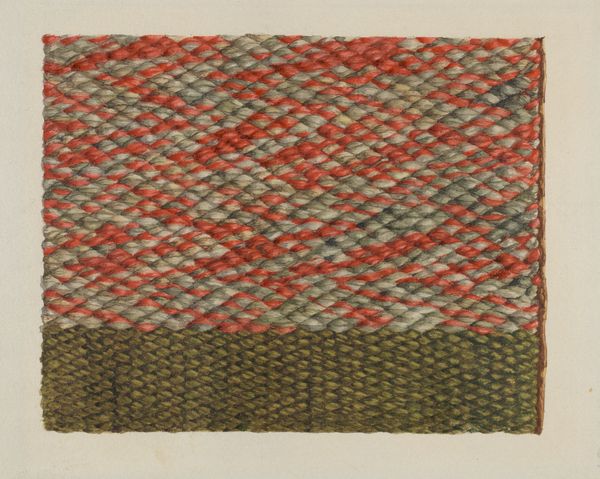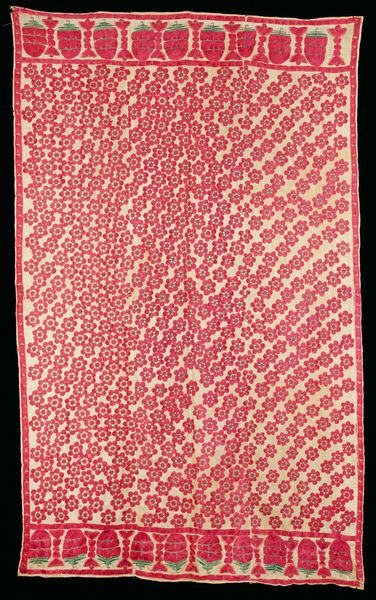
drawing, mixed-media, paper, colored-pencil
#
drawing
#
mixed-media
#
book
#
pattern
#
paper
#
geometric pattern
#
geometric
#
united-states
#
pattern repetition
#
natural texture
#
decorative-art
#
colored-pencil
Dimensions: 8 5/8 x 11 1/4 in. (21.91 x 28.58 cm)
Copyright: Public Domain
Curator: Here we have "Book of Drawings," dating roughly from 1870 to 1890, and attributed to Ohet-toint. It’s a mixed-media piece, primarily drawing, rendered with colored pencil and other materials on paper. Currently, it resides here at the Minneapolis Institute of Art. Editor: The first word that comes to mind is… hypnotic. The dense, repeating patterns almost ripple, don’t they? There’s something incredibly calming and yet slightly unsettling about that relentless regularity. Curator: It's a fantastic example of decorative art of the period. The meticulousness reflects a deep appreciation for design. I see echoes of ancient wave symbols which were intended to provide clarity to any journey in life. Editor: But regularity, as you mention, wasn't something equally shared by all in that era. Native artistic expression was often suppressed in the late 19th century in an attempt to erase Native culture. Curator: And that's the tension. What did these patterns mean for Ohet-toint? Were they a direct continuation of indigenous traditions, or were they also reflecting external artistic movements? Perhaps there were ways to explore traditional spirituality in this way, when access to the sacred itself was restricted? Editor: That reading has promise. Considering its materiality as a “book of drawings,” the format implies a personal, introspective element. We need to contextualize art like this not simply as aesthetics, but as part of a broader narrative of resilience and self-determination. Curator: It is interesting how those natural textures—that slightly chaotic yet organic flow—are placed inside such a strict, regimented pattern. There is also a striking lack of representation in these images. Do you read into that silence any possible intention, or agency on the part of the creator? Editor: Perhaps that silence, as you call it, speaks volumes about resistance. In a society aggressively imposing its own narrative, abstracting to this degree becomes an act of cultural preservation through abstraction. A symbolic protection. Curator: I'm drawn to how these repeated motifs could act as a sort of cultural memory—a way of encoding history and belief into a visual language, so that culture survives within pattern, accessible to those who understand its subtle grammar. Editor: Exactly, and analyzing that "grammar," that symbolism is vital. It is a vital way we can begin to understand resistance, resilience, and artistic innovation that refuses erasure, during an important time in history.
Comments
minneapolisinstituteofart about 2 years ago
⋮
An art form thousands of years old, Plains Indian drawings appear on rocks, hides, cloth, and paper. Their varied subjects include great accomplishments of individuals, important historical events, and ceremonial and daily life. Ohettoint (Charles O. Buffalo) produced this sketchbook while a prisoner of war at Fort Marion, in St. Augustine, Florida, in the 1870s. His drawings express Kiowa perspectives and aesthetic sensibilities. And they served as a form of resistance to cultural suppression and forced assimilation at the hands of the U.S. government, military, and others. Once a powerful force in the Southern Plains region of North America, the Kiowa were respected as fierce warriors and highly skilled horse riders. This two-page drawing shows the centrality of the horse in Kiowa culture, presenting parading warriors and women on horseback along with details of traditional dress and regalia. From a wider perspective, Ohettoint’s pictographic representations of Kiowa tribal history reveal the changes that resulted from encounters with Euro-American culture.
Join the conversation
Join millions of artists and users on Artera today and experience the ultimate creative platform.
